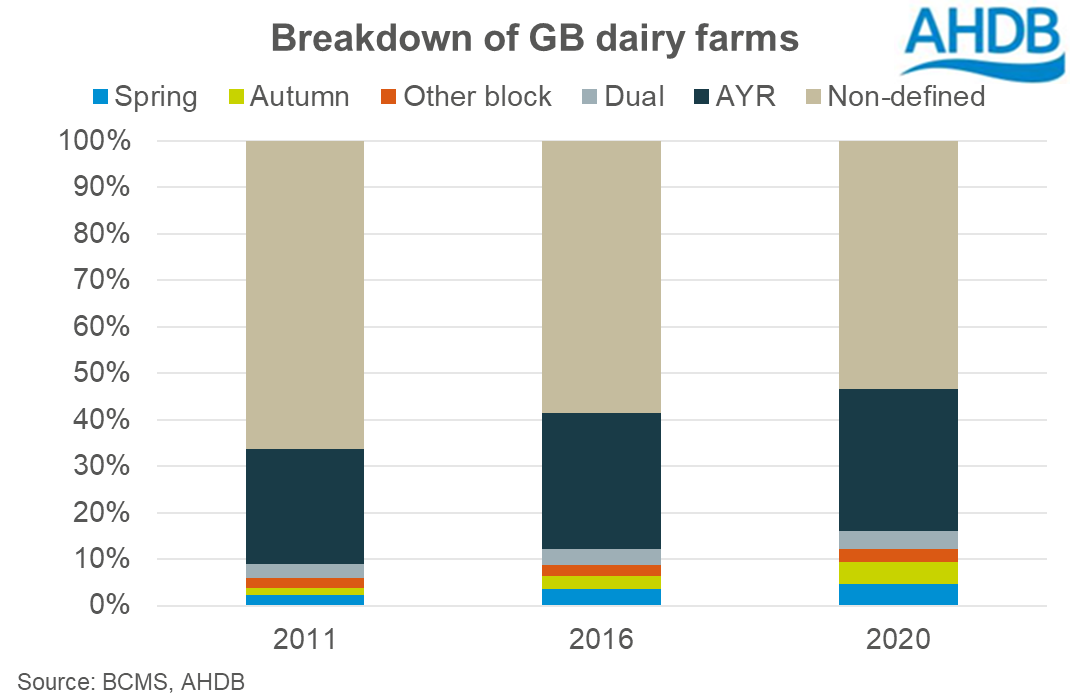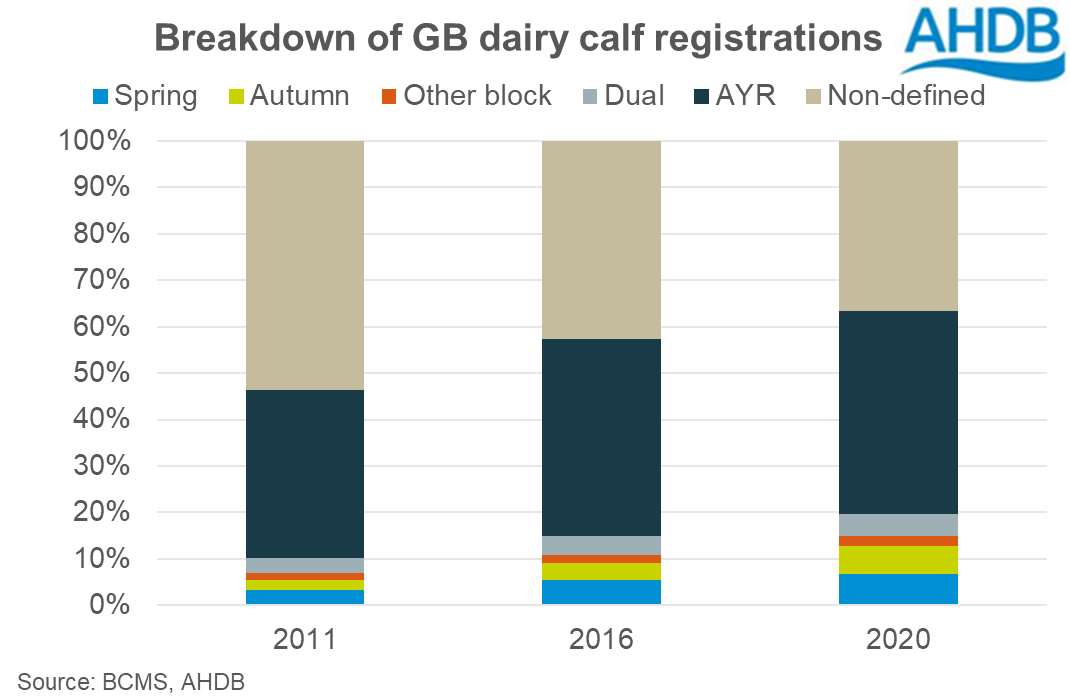Improving focus on calving system
Wednesday, 9 February 2022
Last year we published the breakdown of farms in the country by calving system. That showed that, in 2020, around 16.0% of dairy farmers in GB were operating a block calving system. BCMS have recently provided us with historic information that allows us to look at how calving patterns have changed over the last decade.
The analysis shows a clear improvement in calving patterns over the last ten years. Back in 2011, two-thirds of farms would have been classified as “non-defined”, meaning they were not operating a clear block calving or all-year-round (AYR) calving pattern. By 2020, this had dropped to 53.4%. We have a seen a marked increase in the share of the farms operating block calving and AYR systems between 2011 and 2020:
- Spring block has increased from 2.2% to 4.5%
- Autumn block has increased from 1.6% to 4.7%
- Other block or dual block have increased from 5.1% to 6.7%
- AYR has increased from 24.8% to 30.6%

The development is even more stark when we look at the number of calves registered on those farms.

The number of calves registered to block calving farms has almost doubled over the time period, up from 10.1% in 2011 to 19.6% by 2020. Over the same timeframe, calves registered to AYR farms have also increased, up from 36.2% to 43.8%. Again, showing the remarkable improvement in choosing a system and delivering it.
AHDB has been encouraging farmers to review and identify the system that is best for them for a number of years. This then allows comparisons and benchmarking to take place with farms operating similar systems to help understand the potential and opportunity for improvements.
Notes
The data excludes any farms where all registrations were for non-dairy calves, and also excludes farms who had less than 25 calf registrations in the year.
Our farm key performance indicators suggest block calving herds should target 90% of calvings within a 6 week window, although the “good” level is set at 80%. For this analysis we have used a wider definition of 4 months and 80% of registrations as set out below:
- Spring block: 80% of registrations occur within 4 months from 1 Feb to 31 May
- Autumn block: 80% of registrations occur within 4 months from 1 Aug to 30 Nov or 1 Sep to 31 Dec
- Other block: 80% of registrations occur within 4 months other than defined in spring or autumn block
- Dual block: 90% of registrations occur within the spring block or autumn block windows defined above.
- AYR: Registrations are spread relatively evenly throughout the year, but that can be based on a 12 month, 11 month or 10 month calving system. 12 month means each month sees 3.3%-13.3% of annual registrations. 11 month means 4.1%-14.1% of annual registrations in 11 months of the year, and 10 month means 5%-15% of annual registrations in 10 months of the year.
- Non-defined: covers any farm not falling into one of the other categories.
Sign up to receive the latest information from AHDB.
While AHDB seeks to ensure that the information contained on this webpage is accurate at the time of publication, no warranty is given in respect of the information and data provided. You are responsible for how you use the information. To the maximum extent permitted by law, AHDB accepts no liability for loss, damage or injury howsoever caused or suffered (including that caused by negligence) directly or indirectly in relation to the information or data provided in this publication.
All intellectual property rights in the information and data on this webpage belong to or are licensed by AHDB. You are authorised to use such information for your internal business purposes only and you must not provide this information to any other third parties, including further publication of the information, or for commercial gain in any way whatsoever without the prior written permission of AHDB for each third party disclosure, publication or commercial arrangement. For more information, please see our Terms of Use and Privacy Notice or contact the Director of Corporate Affairs at info@ahdb.org.uk © Agriculture and Horticulture Development Board. All rights reserved.



